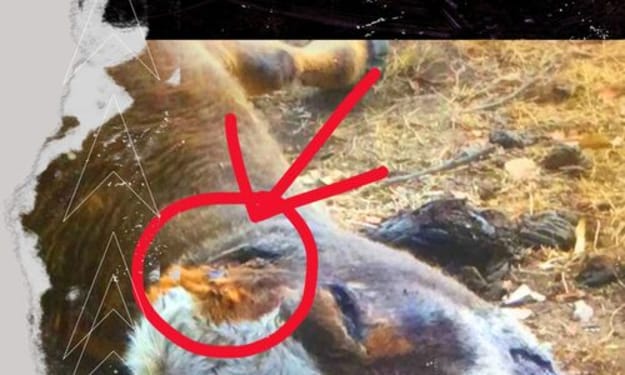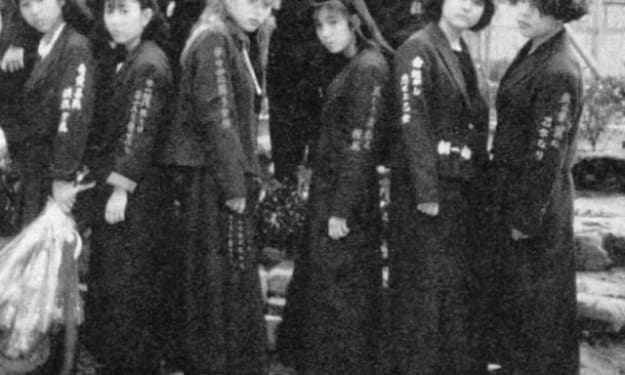The TRUE Narratives & Origins of 5 Well-Known Disney Films
Disney Company is enormous, and millions of people throughout the world enjoy its films.

Here are five Disney films that might surprise you with their origins. The Disney Company is enormous, and its films are beloved by billions of people around the world, but you might not be aware that some of its most well-known works have been based on true events and unusual stories.
Seven Dwarfs and Snow White We are all familiar with the tale, which was made into a movie in 1937 called Snow White and the Seven Dwarfs. The movie was a big success and the first of many princesses for Disney.
When the Evil Queen learns that Snow White is still alive, she takes control of an old hag to give Snow White a poisoned apple. When she takes a bite, she is believed to have died and lays motionless until a prince finds her and kisses her, bringing snow white back to life. The story is about Snow White living with her envious stepmother who orders her Huntsman to kill the princess unable to face killing Snow White, he lets her free in the forest where The Brothers Grimm created the initial Snow White tale in 1812 and first published in 1813.
The only significant difference between it and the Disney movie is that when Snow White is poisoned by the Apple, the prince does not kiss her and bring her back to life instead he takes the coffin she is lying in and trips over a branch in the forest dropping Snow White and causing the poisoned Apple to dislodge from her throat. Now, this is where it gets dark because they then plan a large wedding inviting all the kings and queens in the land the Wicked Witch of the West shows up
As a punishment for attempting to kill Snow White, she is made to wear a pair of glowing red-hot shoes and is made to dance until she passes out. Given that this is supposed to be a children's story, you can see why they chose not to include this scene in the movie.
Pocahontas, a Disney movie, was arguably one of the Disney Princess movies with the most controversy because it was based on a true story but had so many changes made to it that many people felt the portrayal of Pocahontas was too far off the mark to pass for a kid's movie.
Pocahontas is a young American Indian woman whose father is a powerful Indian chief. He wants her to marry a native warrior, but she falls in love with a white man instead. This Disney film was one of the most divisive of the Disney Princess films because it was based on a true story but changed so much that many believe it took historical liberties with his portrayal of Pocahontas.
This is very different from the true story of Pocahontas, who was the daughter of a poet-in-chief and was born around 1595. Her birth name was Mitaka Pocahontas later came as a nickname given to her that means spoiled or naughty child. Things are made worse when the British captain's fellow Englishmen try to rob the Native Americans of their gold.
Pocahontas was a member of a tribe in Tidewater, Virginia, and she would have witnessed many conflicts between the English and the Indians during her childhood as the English arrived in pursuit of the new world.
It's unlikely that there was a romantic relationship between the two like in the movie, but young Mitaka was later captured by English settlers. This is when she met a tobacco planter John Rolfe in order to secure her release. She then agreed to marry him and was renamed Rebecca this was when the then ten-year-old Mitaka threw herself at Captain Smith to stop him from being executed. When John Rolfe Amata Akka traveled to England, Rolfe used his wife as a representation of harmony and friendliness.
When Pocahontas was returning by ship to Virginia, she fell ill and was taken off the ship at Gravesend, England, where she sadly died at the age of 21. There was a lot of speculation that her death was caused by poisoning, but this has never been confirmed. While in England, Mitaka ran into John Smith, the captain she saved from being executed, but she refused to speak and turned her back on him.
Rapunzel is a baby princess with magical healing abilities who is kidnapped by Mother Gothel and taken to a hidden tower, where her golden magical hair grows incredibly long. As Rapunzel gets older, she starts to wonder about the outside world, especially the bright light she sees every year floating in the sky outside her tower prison, and she schemes with a local thief to escape tangled.
They eventually get married and live happily ever after as in the Rapunzel film adaptation of the original story after she falls in love with the thief and uses her magic to bring him back to life.
The story of Rapunzel begins with a lonely couple living next to a wicked witch named Dame Gothel. The neighbor, who is pregnant, sees a Rapunzel plant in the witch's garden and asks her husband to steal it for her to eat. She enjoys it so much that she asks him to steal more, but this time he is caught by Dame Gothel. He begs for his life, and the wicked witch agrees to let him go on the condition that
The person who adopts the infant calls her Rapunzel and raises her as her own, and when she is 12 years old, Dame Gothel imprisons her in a hidden tower. Rapunzel grows up with long golden hair.
When the witch comes to visit Rapunzel, she shouts for her to let her hair down. Rapunzel would then drop her hair down from the tower and have Dame Gothel climb up to a room. Eventually, a prince who recognizes Rapunzel as she sings in a tower runs into her, and they fall in love. They both plan her escape so that they can get married, but Dame Gothel notices something is amiss and investigates.
She sees the tower and learns about the prince's visits in a rage, so she chops off Rapunzel's hair and throws her into the woods to fend for herself. She then uses the cut hair to trick the Prince into thinking he's climbing up to see Rapunzel, but when he gets there and learns she's gone, he jumps from the tower in an attempt to kill himself. He survives, but thorns pierce his eyes,
Dame Gothel is forever imprisoned in the tower to die after she loses her hair in a fit of rage in the 1940 film, which many people consider to be the best Disney production ever made. Despite the fact that the original has a good storyline, it differs significantly from the movie version and wouldn't have made for a good children's movie. Jiminy Cricket tells the story of Pinocchio through the eyes of the woodcarver Geppetto, who wishes his wooden puppet was a real boy and describes how one night he sees a shooting star, and the next morning Pinocchio has come to life. One day, as Pinocchio is making his way to school, he is persuaded to join a traveling circus.
When Pinocchio and Jiminy Cricket returned home, they discovered that Geppetto had gone to sea in search of him and had been swallowed by a whale. Pinocchio sets out to free Geppetto from the whale's belly but drowns trying to save him. When he tries to return home to Geppetto, he is locked up by the owner of the traveling show. He is then released by a magical fairy. However, when he starts lying about what he's
The book on which the movie is based, Carlo Collodi's original Adventures of Pinocchio, depicts a considerably darker tale and was first published as a weekly serial in a kid-friendly comic newspaper. In these tales, Carlo frequently paints Pinocchio as a miserable and utterly disobedient child who laughs in his father Geppetto's face and takes his wig. Pinocchio's friend Jiminy Cricket is not a wise counselor; on the contrary, when he tries to correct Pinocchio for rebelling against his father, Pinocchio slams the insect's head in with a hammer and kills him. Pinocchio was also frequently starved, tortured, robbed, and kidnapped, and had his wooden legs burned.
The author's disdain for well-behaved children is evident in almost every chapter of the book, with Pinocchio being used as an example of what happens to wayward children.
Carlo did not want the narrative to have a happy ending at all and intended to hang Pinocchio, but the publishers were appalled and compelled him to revive the character. This is when he introduces a little child with blue hair as the role.
Winnie the Pooh is a beloved teddy bear who was created by English author AML and adapted by Disney into a series of short features that included Winnie Pooh's friend's piglet or Kanga rabbit Roo Tigger owl and the only human character Christopher Robin. Sadly, the torture and abuse that the writer endured upon Pinocchio in the stories that become the magical fairy in the Disney film were thankfully never shown in the film.
You might be surprised to learn that some of the experiences that Winnie and his companions have in the Hundred Acre Woods are actually based on real people. In 1925, a man created Winnie the Pooh, who was modeled after a bear.
As the soldier was dispatched to the front lines in France, the soldier's bear was sent to the London Zoo.
When Christopher Robin Milne, Milne's son, visited the zoo and fell in love with the female bear, he named his teddy bear Winnie the Pooh and this gave his father the idea to create the yellow bear we all know of today. Winnie the Pooh was based on the bear, and Christopher Robin was based on a Milne's son named Christopher Robin Milne, but now it's believed that the Pooh and his friends
It's a generally held notion that the characters also exhibit traits of mental problems, and here are their psychological profiles. Although the creator of the show has never verified this, it is a widely held theory by many, and when you hear it, it makes you wonder. The Pooh is believed to have a variety of mental disorders. His carefree and dreamy demeanor and disregard for rules point to an inattentive attention deficit hyperactivity disorder. Others believe that his obsession with honey and willingness to risk everything to obtain it indicates that he is experiencing impulsivity with obsessive fixations.
The owl appears to be dyslexic because he spells words incoherently and incorrectly. Piglet is believed to have generalized anxiety disorder. His general anxiousness and low self-esteem contributed to his stuttering speech and the unreasonable anxiety he displays. Despite Tigger's uncontrollable bouncing and his exceedingly impulsive temperament, the others are drawn to him since he is very gregarious, yet by association they run the risk of getting themselves into trouble as a result of his behaviors. Some claim that this is a typical indication of ADHD.
Some claim that Kanga exhibits symptoms of social anxiety disorder. She is an overly protective, overly-organized mother who is also fixated on a little, micromanaging rule that prevents him from making his own judgments.
Although she cannot control him, Tigger treats him and cares for him in much the same way. People have speculated that the overly meticulous rabbit, who was fixated on having everything in its proper place, suffers from OCD. Likewise, the pessimistic donkey, who always sees the negative side of things, appears incapable of finding any joy in life and is undoubtedly experiencing some form of depression.
Some people believe Christopher Robin suffers from schizophrenia, but this wouldn't be the first time something similar has happened. Christopher is known for having a vivid imagination and treating his stuffed animals like his best friends. It is thought that Christopher created all the characters in his head and that they represent all the feelings he is actually experiencing.
About the Creator
Enjoyed the story? Support the Creator.
Subscribe for free to receive all their stories in your feed. You could also pledge your support or give them a one-off tip, letting them know you appreciate their work.






Comments
There are no comments for this story
Be the first to respond and start the conversation.